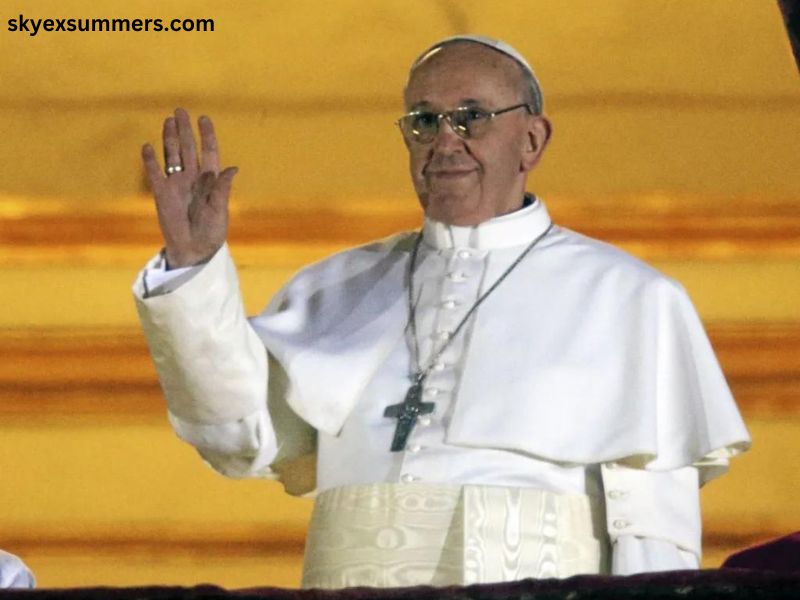The papacy, with its profound influence on Christian doctrine and Western civilization, has a rich history that traces back to Saint Peter, one of Jesus Christ’s apostles. The concept of a singular leader in the Church has evolved, but for many, the papal lineage remains a symbol of spiritual authority and continuity. In this article, we will explore the significance of the first pope in a theoretical line of 13, how this lineage reflects the historical and spiritual dimensions of the Church, and what it means for contemporary Christianity.
The Foundation of Papal Authority
The idea of papal authority is grounded in the belief that Jesus entrusted Peter with the leadership of his followers. According to Catholic tradition, Jesus said to Peter, “You are Peter, and on this rock I will build my Church” (Matthew 16:18). This passage is often cited as the basis for papal supremacy and the apostolic succession that follows. Peter is regarded as the first pope, and his leadership set the stage for an institution that would eventually encompass a global community of believers.
The Symbolism of the Number 13
The concept of a “line of 13” popes can be interpreted in several ways. The number 13 has diverse meanings across cultures and religions. In Christianity, it is often associated with the Last Supper, where Jesus dined with his 12 apostles, making a total of 13. In this context, the number can symbolize unity among believers and the collective mission of the Church.
The First Pope: Saint Peter
Saint Peter’s life and ministry are foundational to understanding the papacy. He was a fisherman by trade, called by Jesus to be a “fisher of men.” Following the resurrection, Peter took on a leadership role in the early Church, preaching, performing miracles, and guiding the nascent Christian community. According to tradition, he was martyred in Rome, where he became a symbol of courage and faith.
The papacy began to formalize after Peter’s death, as bishops succeeded him, claiming their authority through apostolic succession. This lineage is critical to the Church’s understanding of continuity and legitimacy.
The Theoretical Line of 13
If we were to imagine a line of 13 popes that followed in the spirit of Saint Peter, each would represent a unique period in Church history, contributing to its development and addressing the challenges of their times. Here, we outline these popes, focusing on their contributions and historical contexts.
- Saint Peter (c. 30-64 AD): The foundation of the Church and the apostolic authority. He established the early Christian community in Rome.
- Saint Linus (c. 64-76 AD): Traditionally recognized as the second pope, Linus is believed to have continued Peter’s work and dealt with early heresies.
- Saint Anacletus (c. 76-88 AD): Known for organizing the Church in Rome and further solidifying the authority of the papacy.
- Saint Clement I (c. 88-99 AD): Author of the famous letter to the Corinthians, which emphasized apostolic succession and the authority of the bishop.
- Saint Evaristus (c. 99-107 AD): Focused on expanding the Church and establishing a hierarchical structure within the growing Christian community.
- Saint Alexander I (c. 107-115 AD): Known for promoting Christian rituals and possibly the introduction of the use of holy water.
- Saint Sixtus I (c. 115-125 AD): Implemented various liturgical reforms and established the role of the papacy in guiding Church doctrine.
- Saint Telesphorus (c. 125-136 AD): The first pope to be martyred, he is credited with introducing the celebration of Christmas.
- Saint Hyginus (c. 136-140 AD): Focused on combating heresies and further developing the Church’s organizational structure.
- Saint Pius I (c. 140-154 AD): An important figure in addressing the emerging Gnostic teachings that threatened early Christianity.
- Saint Anicetus (c. 154-165 AD): His papacy saw debates over the date of Easter, showcasing the Church’s growing influence in theological matters.
- Saint Soter (c. 165-174 AD): Known for his pastoral care and community outreach, emphasizing the importance of charity.
- Saint Eleutherius (c. 174-189 AD): His leadership marked a period of relative peace, allowing the Church to grow without severe persecution.
The Evolution of the Papacy
As we trace the line of these 13 popes, we can observe significant transformations in the role of the papacy. Initially, the pope was seen primarily as a local bishop, focused on the needs of the Christian community in Rome. However, over the centuries, the papacy grew in authority and influence, shaping Christian doctrine and responding to socio-political challenges.
The role of the pope evolved through the early Church’s persecution, the establishment of Christianity as the Roman Empire’s state religion, and the subsequent Middle Ages, where the papacy became a central power in European politics. Each pope in our theoretical line contributed to this evolution, laying the groundwork for the modern papacy.
Papal Authority and Modern Christianity
In contemporary times, the role of the pope continues to spark debate within the Church. Questions regarding papal infallibility, the authority of bishops, and the balance between tradition and modernity are increasingly relevant. Popes like John XXIII and Francis have emphasized a more pastoral approach, seeking to engage with contemporary issues such as social justice, environmental concerns, and interfaith dialogue.
The idea of a line of 13 popes can serve as a reminder of the Church’s historical roots while also prompting reflection on its future. Each pope, from Peter to Francis, has had to navigate the challenges of their time while remaining true to the core message of the Gospel.
Conclusion
The first pope in a line of 13 encapsulates the journey of the Catholic Church from its humble beginnings to its current global stature. Each figure in this lineage contributes to the ongoing story of faith, authority, and community. Understanding this lineage is not merely an academic exercise; it reminds us of the enduring power of leadership, the importance of unity, and the need for a responsive and compassionate Church.
As we reflect on the legacy of these early popes, we are called to consider what it means to be part of a faith community today. In a world rife with division and uncertainty, the principles established by these leaders—faith, hope, and charity—continue to resonate, guiding believers toward a future marked by love and service. Whether one views the papacy as a divine institution or a historical legacy, its impact on human lives and society is undeniable. The story of the first pope and his successors serves as a testament to the enduring spirit of the Church, ever-evolving yet steadfast in its mission to spread the message of Christ.



